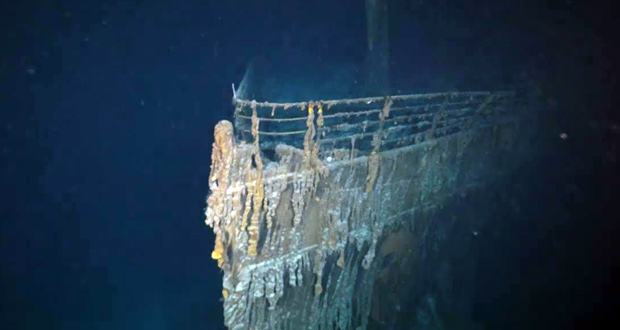Shot from an OceanGate Expeditions submersible, the footage enables zooming in while still maintaining 4K quality for large screen and immersive video projects.
OceanGate Expeditions has shared glimpses of the first ever 8K footage of the wreck of the Titanic which is intended to be suitable for large-screen and immersive video projects.
The video was captured from within a submersible by the crew of the company’s 2022 Titanic Expedition, which included experts guiding the exploration of different features of the wreck.
“The amazing detail in the 8K footage will help our team of scientists and maritime archaeologists characterise the decay of the Titanic more precisely as we capture new footage in 2023 and beyond. Capturing this 8K footage will allow us to zoom in and still have 4K quality which is key for large screen and immersive video projects. Even more remarkable are the phenomenal colours in this footage,” said Stockton Rush, president of OceanGate Expeditions.
“We are seeing new details in this footage. For example, I had never seen the name of the anchor maker, Noah Hingley & Sons Ltd., on the portside anchor. I’ve been studying the wreck for decades and have completed multiple dives, and I can’t recall seeing any other image showing this level of detail. It is exciting that, after so many years, we may have discovered a new detail that wasn’t as obvious with previous generations of camera technologies,” said Rory Golden, OceanGate Expeditions Titanic expert and a veteran Titanic diver.
The 8K video footage of the Titanic includes a section where green lights from the company’s laser scaling system can be seen on the portside anchor of the ship. This system allow the crew to determine the size of objects seen through the camera accurately, with the distance between two green lights being 10 centimetres.
The 8K video is expected to assist in determining the rate of decay for the Titanic as future expeditions capture new footage that can be compared year after year. With the help of scientists, the video will also support identification of species that are observed on and around the Titanic and archaeologists will be able to document elements of the wreck and debris field in greater detail.
Reference : AVinteractive


